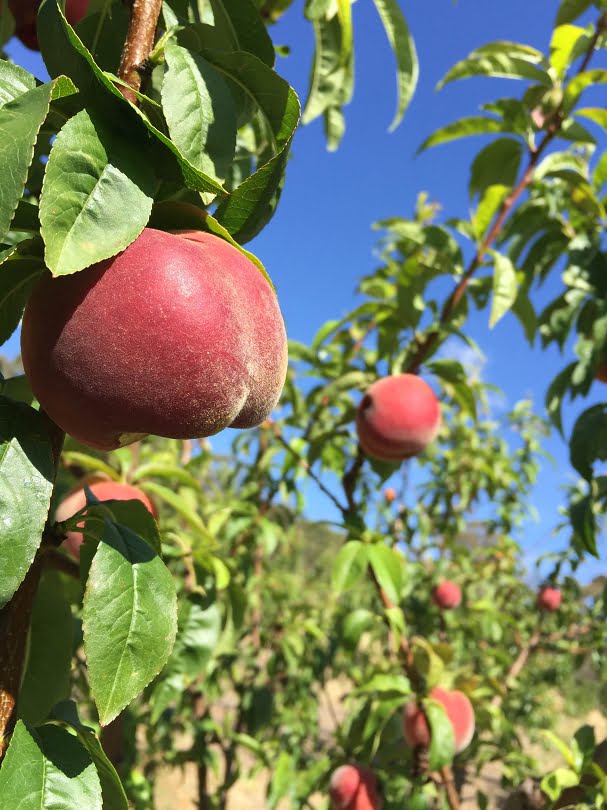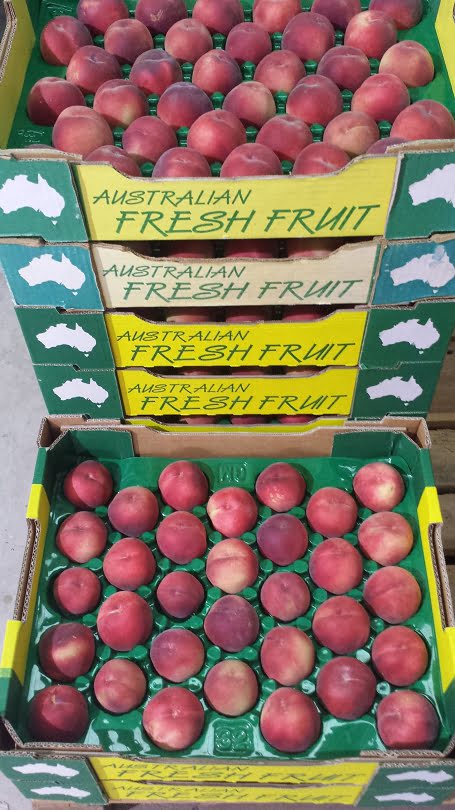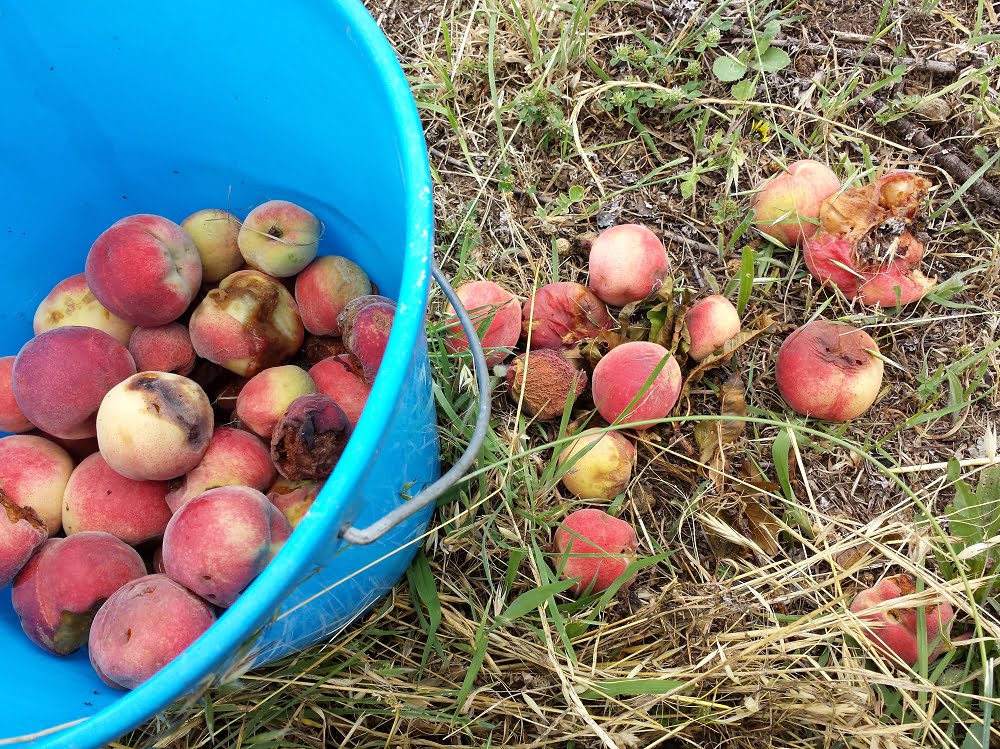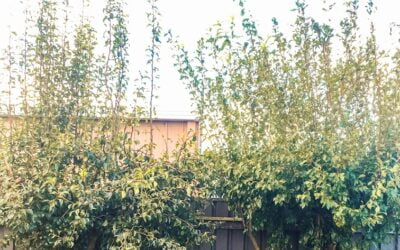Estimated reading time: 6 minutes
How much fruit will a mature tree bear?
This is a common question when people are trying to decide how many fruit trees they need in their garden. It’s usually a winter conversation because this is traditionally tree-planting season.
How much fruit do your trees grow?
The question of how much fruit a tree can produce often comes up in winter, but it won’t be answered until summer. This is when there’s fruit on your trees, and you have the chance to measure (rather than predict, or guess) your harvest volume.
That’s why tracking your harvest every year is so valuable. We recommend learning some harvesting pro-tips and keeping a diary for every single fruit tree in your garden—it makes this process much easier and more meaningful.
A great place to start is simply recording how much fruit each tree produces each season. If you have any mature fruit trees that bear large, healthy crops each year, they can give you a sense of what’s possible—and a useful benchmark for comparison.
Any time you’re wondering if a tree is “normal”, it helps to have something to measure against.

But it’s also important not to judge your tree’s performance too harshly! There can be many reasons why a tree might produce a smaller crop in any given year—and it’s not usually the tree’s fault.
In the meantime, we’ll share an example of what you might expect from a healthy, productive fruit tree.
Tracking how much fruit your tree produces
This example from our orchard will show you how much fruit we expect to pick from a mature peach tree. Our method is quite accurate without needing to weigh every single piece of fruit.
In the photo above, Ella is picking white peaches from a 10-year-old heritage ‘Anzac’ tree. It’s a vase-shaped tree that is quite mature and at its full size.

You can’t see the full tree from this photo, but a vase-shaped tree normally has 6-10 limbs; this one has eight branches that are all roughly the same size.
Anzacs are notorious for being small, so they need really hard thinning. The trees had a touch of leaf curl early in the season because we had a wet spring. That slowed the growth of the peaches early on. Because Anzacs are such early ripeners, the result is that the fruit is quite small.

It’s a good idea to pick them into trays like this to protect the fruit after picking. We know from experience that a tray of fruit this size weighs roughly 2.4 kg.
From this tree, we picked an average of two trays from each limb. That works out to about 35 kg for the tree. One-quarter of them were second-grade because the birds had a feast.
We also picked up about 4 kg of damaged peaches from the ground that were too damaged to use. If we’d got to them a bit earlier, some would probably have been good enough for jam or drying. Alas, too late.
The importance of picking fruit at the right time
Picking fruit at the right time sounds simple, but it’s an area where people often get it wrong. If you miss the ideal harvest date, it’s sadly common to find the fruit on the ground instead of the tree when you come to pick it up.
Before you get to the harvest part of the season, you’ve already done all the hard work of pruning, thinning, watering, and feeding your trees.
So losing fruit on the ground is not only a bit tragic, but it’s also a rotten return on the investment of all your time, money, and energy to that point.

Should fallen fruit be included in the harvest?
The answer to this question totally depends on your view of “waste” and whether you’re aiming to create a closed nutrition loop in your garden.
At our place, we aim to use every piece of fruit to its highest purpose, and there’s definitely no such thing as waste.
We’re fortunate to have animals that will gobble up any fruit we have spare. At our place, that means the chickens or cows will get a feed.
The worms can manage a little bit of fruit, but we’re careful not to overload them with huge quantities.
Anything that’s too rotten for animals goes straight into the compost.
So, altogether this tree yielded 39 kg of fruit. Even though the 4kg of windfall fruit wasn’t used as human food in this case, it could have been if we’d been more on the ball!
That’s delightfully abundant, and pretty typical for a large mature peach tree. You can soon see why it doesn’t take very many healthy trees to provide a year’s supply of fruit for your family.
Related Articles
Taming monster fruit trees with renovation pruning
Learn how to use a technique called renovation pruning to tame large, unpruned, and out-of-control monster fruit trees.
What broke my fruit tree?
Broken fruit trees can be caused by animals eating them, or accidental damage. Identifying the animal is the first step to prevention.
Know the parts of your fruit tree before you start pruning
Learning the different names for the parts of your fruit tree before you start pruning will help you to understand what you’re doing.








What fruit tree can I plant now in my backyard. I have a sunny place on the side and will not harm my grass.
I live in Castle Hill, NSW 2154.
I like Apricots. Fruits that can grow best in my area.
If you like apricots, that’s an excellent choice for your fruit tree – as long as you don’t get too much frost. If you do, a peach or nectarine tree may do better in that spot. Really, you have so many choices – it’s probably best to go with the fruit you like best!
Hi Asaf (and Katie),
As the crow, cockatoo, parrots and possums go I’m not far from Castle Hill (20min to the north). The challenge here is keeping the tree to a size where you can net it and making sure that you are vigilant at tree care before fruit and then staying on top of fruit fly, which is a challenge due to the climate.
Have had good success with my cherry and plan on a few more. Will also pay more attention to pruning of any new trees to make netting possible (been a challenge with older/larger trees).
Also can’t go past citrus locally – they love the climate, pests are minimal and easily managed and the vitamin C is always good for flu season.
Good luck
Kathy
Hi Kathryn, lovely to hear from you. You certainly live in a beautiful part of the world. Congrats on the cherry success and sounds like citrus are going to be a winner for you as well. Welcome to the GGF program – feel free to submit any photos you’d like to discuss to the Members Forum, or for the monthly Q&A session. Cheers, Katie (and Hugh)